ANIMALS
Rescued Circus Bear Starts a New Chapter of Freedom After Two Decades in Captivity
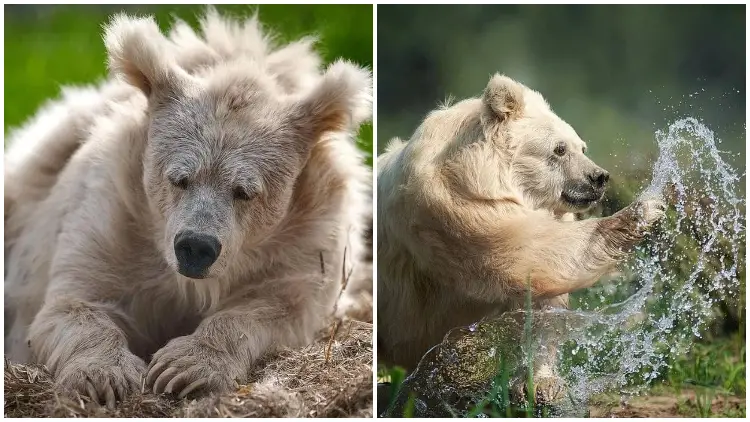
A Circus Bear, Imprisoned for 20 Years, Begins a Journey to Freedom and a New Life.
An older bear, who has spent the majority of her life trapped in a small cage as part of a traveling circus, is now breaking free from the confines that have restricted her for two decades. Thanks to the collective efforts of animal welfare organizations and caring individuals, this brave bear is embarking on a remarkable transformation, leaving behind a life of confinement and stepping into a world of vast open spaces and natural surroundings. Join us as we witness the inspiring beginning of this bear’s journey, filled with hope, liberation, and the opportunity to rediscover her innate wild nature.
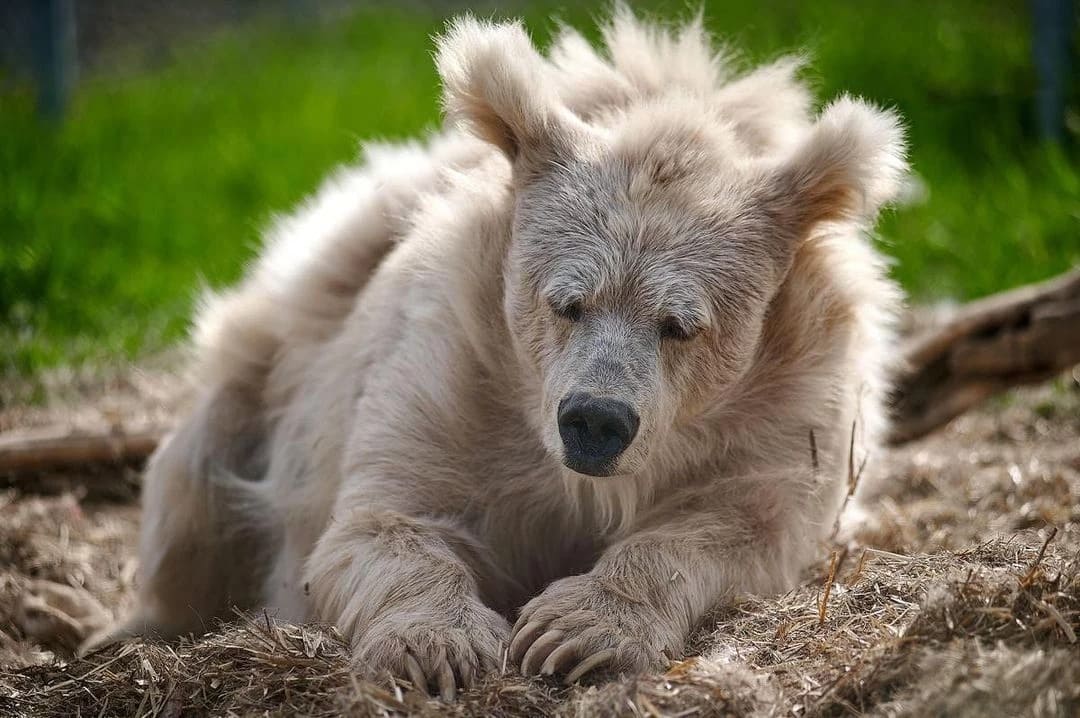 Image source: WHITE ROCK bear shelter
Image source: WHITE ROCK bear shelter
Circuses are not suitable environments for animals, and Chada, a Himalayan bear, was all too familiar with the hardships of circus life.
 Image source: WHITE ROCK bear shelter
Image source: WHITE ROCK bear shelter
We can all acknowledge that animals thrive best in their natural habitats, but unfortunately, many animals are forced to live in conditions that are vastly different from what they should experience. Apart from species targeted for their valuable body parts, there are also animals bred in captivity and subjected to captivity for the purpose of entertainment and tourism.
Chada is an unfortunate bear who was born and raised in captivity. She endured a life confined within the confines of a circus, spending two decades confined to a cramped cage. As a result, her eyesight has significantly deteriorated, and she now faces nearly complete blindness.
The Save Wild Foundation quickly arrived at the location and successfully rescued Chada, the Himalayan bear.
 Image source: GeoBeats Animals
Image source: GeoBeats Animals
Her previous owners likely believed that she was too old to be useful for their business, so they abandoned her in an empty garage. Fortunately, someone spotted her confined in the cage and immediately contacted the White Rock Bear Shelter in Kyiv, Ukraine.
Upon receiving the call, the dedicated team from the foundation, led by their zoologist, Marina, swiftly arrived to rescue the distressed animal and transported her to the Wild Rock Bear Shelter. Once Chada settled into her new home at the shelter, she received proper veterinary care and was given an environment that closely resembled her natural habitat.
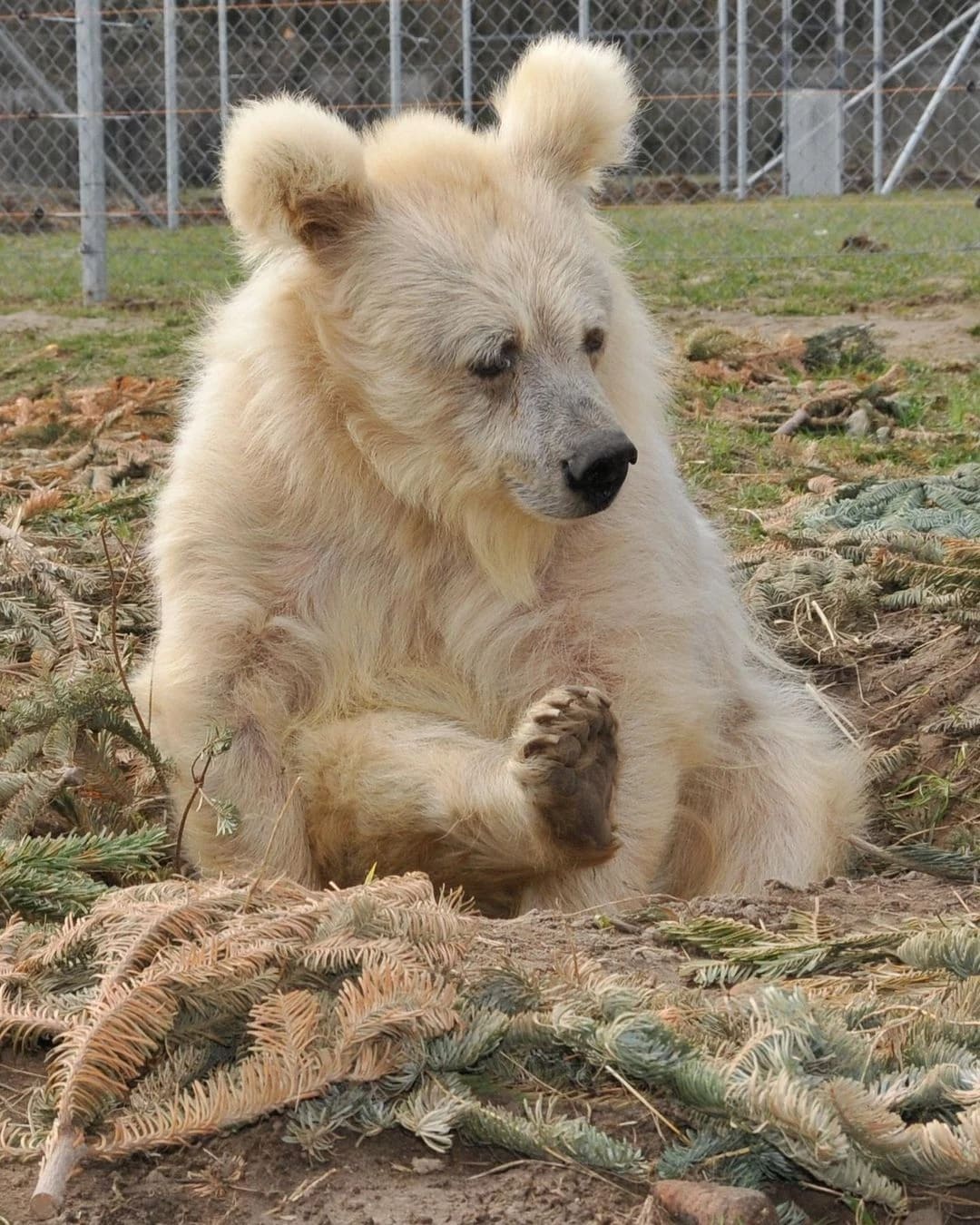 Image source: WHITE ROCK bear shelter
Image source: WHITE ROCK bear shelter
Chada felt a sense of wonder and excitement as she took her first steps into the world outside her confinement.
 Image source: GeoBeats Animals
Image source: GeoBeats Animals
“When we released her, first time in an enclosure, it’s always an emotional moment because it’s a first time when bears see grass and see water.” shared Marina. “She searched and investigated everything around her.
Chada belongs to a special type of brown bear called Ursus arctos isabellinus, which is found in the Himalayan region of Middle Asia. Typically, these bears are quite large, measuring about 9.19 feet in height and weighing around 456.36 pounds. However, due to her years spent in a cramped cage, Chada is smaller than usual, weighing only 260 pounds. Additionally, she is considered an endangered species, so she is kept safely in an enclosed area at the shelter. The caretakers at the shelter are concerned about her delicate body and want to ensure she is protected from any harm that other species may unintentionally cause.
Although Chada hasn’t had many opportunities to interact with other bears, it doesn’t mean she doesn’t enjoy her new life.
 Image source: GeoBeats Animals
Image source: GeoBeats Animals
In her enclosure, Chada has plenty of space to move around and explore. She has a cozy den and a warm box for the winter months, as well as a small pool to cool off in during the summer. Chada loves to roam around her enclosure, frolic in the grass, and she especially adores splashing around in her pool.
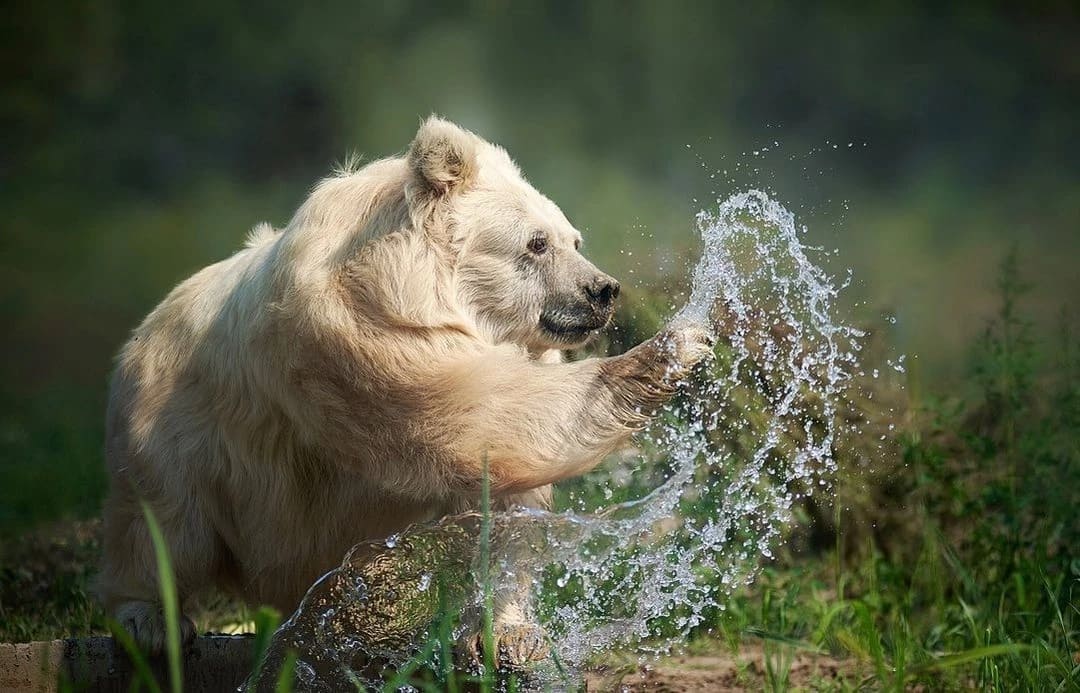 Image source: WHITE ROCK bear shelter
Image source: WHITE ROCK bear shelter
However, Chada also values her relaxation time and can get a bit grumpy when the other wolves and bears make too much noise. It’s almost like she’s a grandmother who appreciates some peace and quiet!
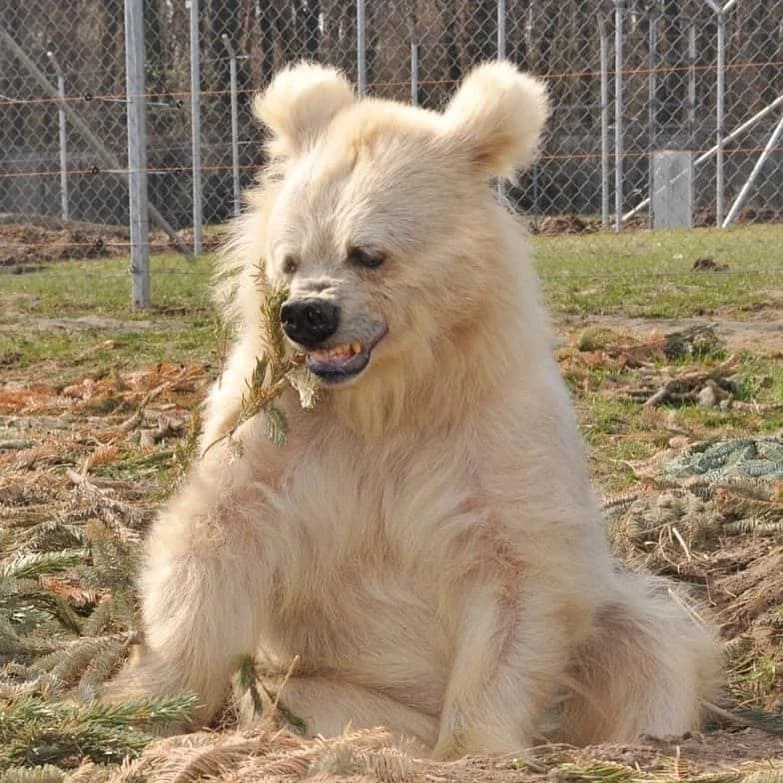 Image source: WHITE ROCK bear shelter
Image source: WHITE ROCK bear shelter
If you’re touched by Chada’s story, we would love to hear from you! Feel free to leave a comment in the section below. And remember to visit our homepage regularly for more captivating articles about the incredible world of animals.
ANIMALS
Amazing Video of Unseen Ocean Creatures in the Ningaloo Canyons

The Schmidt Ocean Institute recently explored the Ningaloo Canyons on the western coast of Australia using a robotic underwater vehicle called the ROV Sebastian. Check out the amazing video of what they discovered in the deep parts of the Indian Ocean.
More info: Youtube




ANIMALS
These Pics Are Art and the Artists Are Insects

Flying insects move so quickly that they are hard to follow, but new technology and some smart ideas have helped Spanish photographer Xavi Bou do just that. After spending 10 years focusing on birds in flight for his Ornithographies project, he turned his attention to insects.
For Entomographies, he uses high-speed video footage taken by Adrian Smith, an insect expert at North Carolina State University, to study and record how insects move. Bou then picks multiple frames and combines them into single images that show the fast movements of one or more insects through space and time.
With Smith’s help, Bou has captured the aerial tricks of wasps, the jumps of leafhoppers, and the fluttering of butterflies in amazing detail. He hopes that by doing this, he can make people more aware of the decline in important insect populations around the world.
1. Zebra longwing
This butterfly, which is common in many areas of the Americas, really fits its name. It can fly very high with just a few flaps of its large wings.
 Image source: nationalgeographic
Image source: nationalgeographic
2. Two-lined spittlebug
This insect, which comes from the eastern United States, is often seen as a pest because it likes to eat grass. Its springy back legs can make it jump into the air like a rocket.
 Image source: nationalgeographic
Image source: nationalgeographic
3. Yellow-collared scape moth
Unlike most moths, this North American species flies during the day. Its shiny blue-black wings sparkle in the sunlight.
 Image source: nationalgeographic
Image source: nationalgeographic
4. Ailanthus webworm moths
These tropical moths have spread farther north in the U.S. Because of their larval host, the invasive tree of heaven, they are now one of the most common backyard moths in the country.
 Image source: nationalgeographic
Image source: nationalgeographic
5. Common stonefly
Mostly found in eastern North America, this insect starts its life as an underwater nymph in forested streams or rivers. Then it leaves the water, sheds its skin, and becomes an adult with wings.
 Image source: nationalgeographic
Image source: nationalgeographic
6. Green lacewings
Eighty-seven species of this insect have been found in the U.S. and Canada. Since they eat a lot of unwanted plant pests like aphids and mites, they are often used to naturally control these pests.
 Image source: nationalgeographic
Image source: nationalgeographic
7. Grapevine beetle
This insect, fittingly named, eats the leaves and fruit of grapevines, both wild and farmed, but it doesn’t do much damage to the plants. As a type of scarab beetle, it often flies in a curved path.
 Image source: nationalgeographic
Image source: nationalgeographic
8. Oak treehopper and green treehopper
Treehoppers are known for their uniquely shaped pronotum, the part behind their head, which often looks like plant parts to hide from predators. They can jump well thanks to special muscles.
 Image source: nationalgeographic
Image source: nationalgeographic
9. Banded orange
This brightly colored butterfly can be found from Mexico to Brazil. Before mating season, male butterflies look for mineral salts, sometimes even drinking salty fluids from the skin, eyes, and nostrils of other animals.
 Image source: nationalgeographic
Image source: nationalgeographic
10. Sapho longwing
Longwings can live for 6 to 7 months, longer than most butterflies. This type, found from Mexico to Ecuador, has shiny blue wings, which is why it’s also called the Sapphire longwing.
 Image source: nationalgeographic
Image source: nationalgeographic
ANIMALS
Eagle and Fox in an Epic Midair Battle Over a Rabbit, Were Captured by a Photographer

Wildlife photography often depends on the perfect combination of good timing and the right place.
That’s exactly what happened when Kevin Ebi, an experienced wildlife photographer, captured an incredible battle between a bald eagle and a red fox, both competing for a rabbit meal.
In a detailed blog post, Ebi shares the fascinating series of events that unfolded while he was photographing foxes in San Juan Island National Historical Park, located in Washington state.
Ebi noticed a lively group of eight fox kits as they began their hunting lessons. Suddenly, they spotted a rabbit, and a thrilling chase ensued. Eventually, one of the foxes emerged as the winner, proudly carrying the rabbit across the field.
 Image source: Kevin Ebi
Image source: Kevin Ebi
Ebi shares what happened at that moment: “As I followed the fox with my camera, a sudden bald eagle cry caught my attention. It was swiftly approaching, clearly aiming for the rabbit. I quickly focused on the fox, anticipating a quick turnover of events.”
To Ebi’s astonishment, instead of a quick surrender, the situation turned into a intense fight in the air.
The eagle used its power to lift the fox and rabbit high up in the sky. Even while airborne, the fox attempted to break free by swinging back and forth.
 Image source: Kevin Ebi
Image source: Kevin Ebi
 Image source: Kevin Ebi
Image source: Kevin Ebi
 Image source: Kevin Ebi
Image source: Kevin Ebi
In the end, the eagle moved the rabbit to its other claw, causing the fox to let go. The intense battle came to an end in less than 10 seconds.
 Image source: Kevin Ebi
Image source: Kevin Ebi
For those worried about the fox’s well-being after the fight, Ebi reassures that it was not injured. The fox swiftly bounced back from the encounter and resumed its playful behavior with the other young foxes, showing no visible wounds from the aerial clash.
 Image source: Kevin Ebi
Image source: Kevin Ebi
 Image source: Kevin Ebi
Image source: Kevin Ebi
 Image source: Kevin Ebi
Image source: Kevin Ebi
 Image source: Kevin Ebi
Image source: Kevin Ebi
-

 GARDEN10 tháng ago
GARDEN10 tháng ago4 Easiest Ways to Get Free Plants
-

 ANIMALS10 tháng ago
ANIMALS10 tháng agoBritish Angler Caught Huge 67-Pound Goldfish in the World
-

 FUNNY10 tháng ago
FUNNY10 tháng ago30 Funny and Perplexing Photos That Make You Laugh All Day
-

 GARDEN9 tháng ago
GARDEN9 tháng ago30 Shimmering Side Yard Landscape Ideas
-

 FUNNY10 tháng ago
FUNNY10 tháng ago30 Weirdest Things That People Came Across On The Subway
-

 DIY & CRAFT10 tháng ago
DIY & CRAFT10 tháng ago19 Easy and Creative DIY Ideas to Enhance Front Yard
-

 ANIMALS10 tháng ago
ANIMALS10 tháng agoKindhearted Driver Rescues Skinny Dog Hiding Near Highway Thanks to His Eagle Eye
-

 FUNNY10 tháng ago
FUNNY10 tháng ago22 Design Fails That Will Make You Laugh Out Loud





